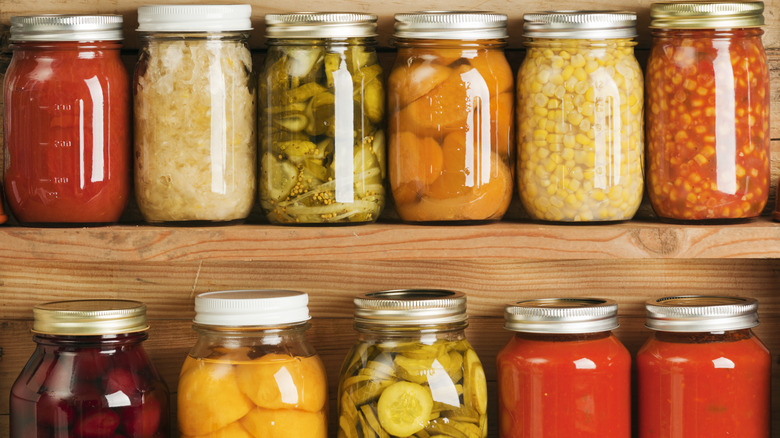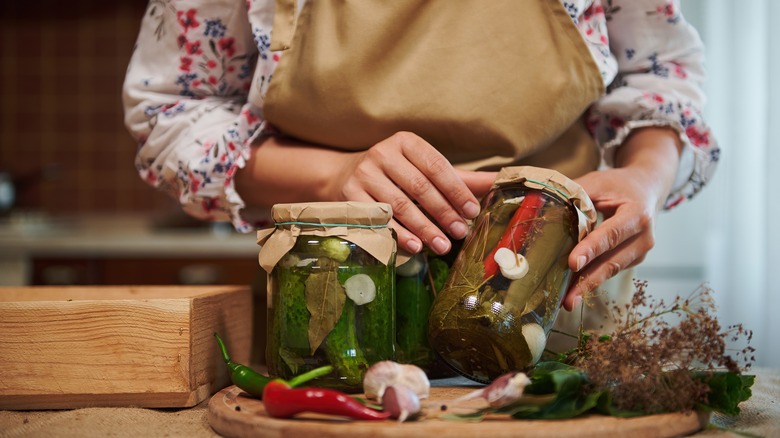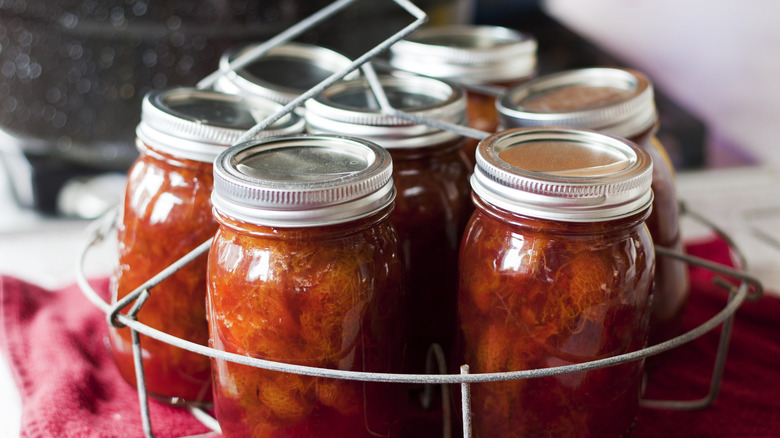When Are Bubbles In Your Canned Goods A Red Flag?
For gardeners and home chefs alike, canning provides the perfect means of preserving sauces, soups, meats, or even seasonal produce you want to capture in a jar for dreary wintertime eating. Any way you do it, canning provides a pantry full of powerhouse ingredients that will make cooking in the future easier and more delicious. But, it's a process that requires rigorous sterilization and adherence to a careful hygiene protocol to ensure the food is properly stored for safe consumption later on.
Burping jars before sealing them is an important step in ensuring your food is appropriately protected from potential contamination, but it's not uncommon to see some bubbles — even in well-sealed cans. The strength of the seal is the determining factor in the equation; if airtight, you're safe to eat the food inside, even if small bubbles are present. But if the lid's seal is compromised, it's better to be safe and not eat the contents.
Why air bubbles are not always a cause for alarm
When canning, the core objective is to take a perishable food and make it shelf-stable for far longer than it would last even in a refrigerator. This can be done by thoroughly sterilizing all canning equipment to remove bacteria, placing carefully prepared food inside the jars, and then using heat or pressure to create a tight seal between the jar and the lid. This ensures the contents won't become contaminated by microorganisms or break down with still-active enzymes.
Air can be a problem in the canning process because it could interfere with establishing a strong seal. To release as many bubbles, sterilized tools like a spatula or a bubble freer are used to remove as much air from the jar as possible before placing a lid on top. If you see bubbles in your cans, it doesn't necessarily mean your seal didn't form correctly — it's normal for some to remain. As long as the bubbles aren't actively moving within the jar and you don't see signs of fermentation, there's no reason to panic.
How to make sure your seal is strong
While some canning lids have what is known as a button in the center of it — a little bump that helps you easily identify when a seal is made or broken — other lids are less obvious. One way to test a seal is with the metal spoon test, which can be done as early as 12 hours after you complete the canning process.
An unsealed lid will have a hollow thud sound when hit with a metal spoon, while a sealed lid sounds tinny and musical. You can also test a lid by pressing on it: A well-sealed one will dip down slightly in the center and will not wiggle when pressed. After 24 hours, you should be able to pick the jar up by the lid only without it falling — if your seal is tight, your jar will hold on without any issue.
It's important to note that, even if your lid remains sealed, canned food can go bad anyway. Always use your best judgment before digging in — if the contents smell funny, have mold or an unanticipated film on top, or if the container or lid looks like it's been damaged, it's better to toss it out than risk consuming potentially contaminated food. If the food inside seems fresh and well-preserved, eat your heart out and refrigerate any leftovers. Preserved soup, fruit, and marinara sauce will stay fresh in the fridge for up to 4 days after the lid is opened.



